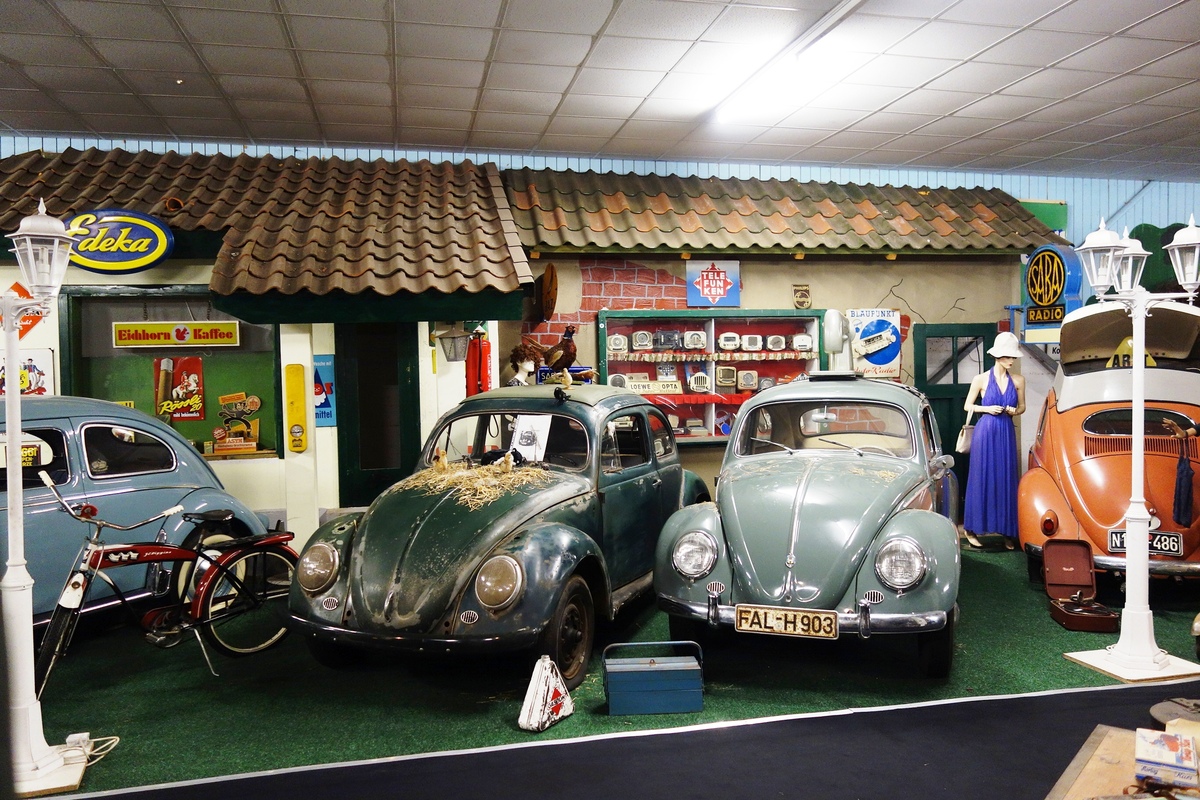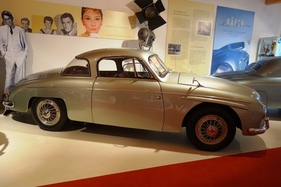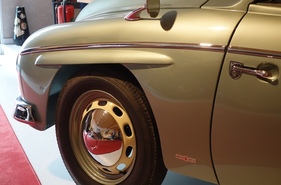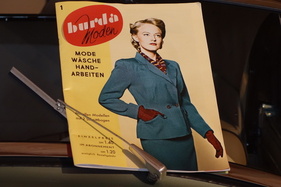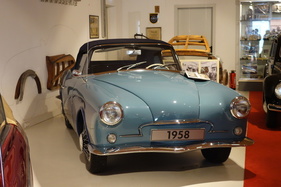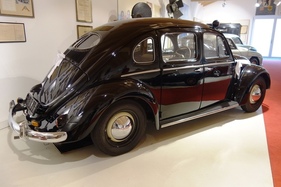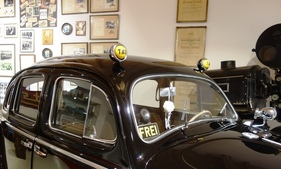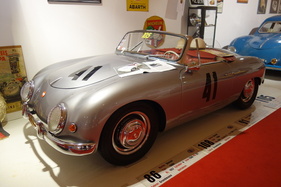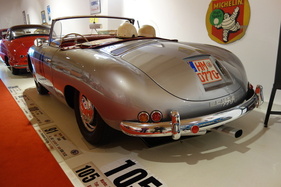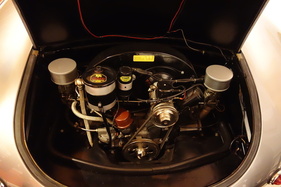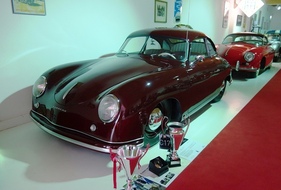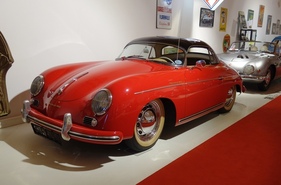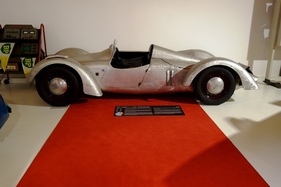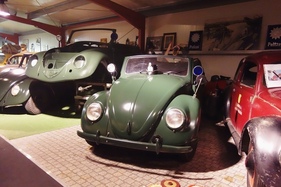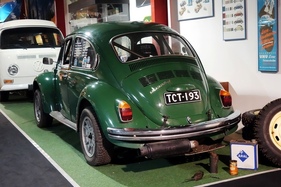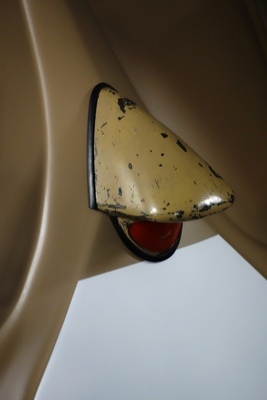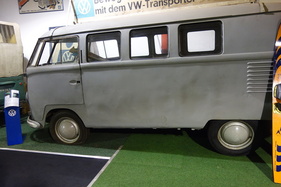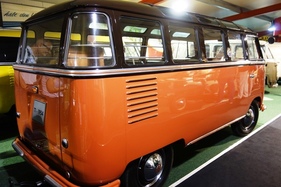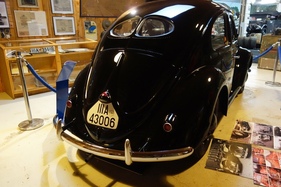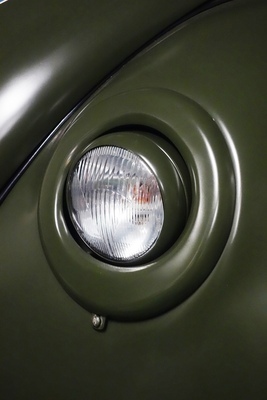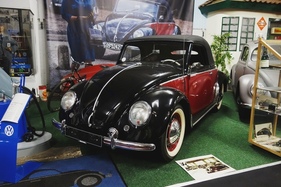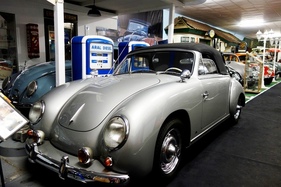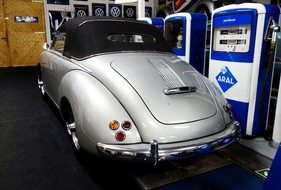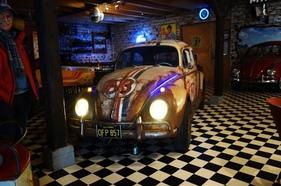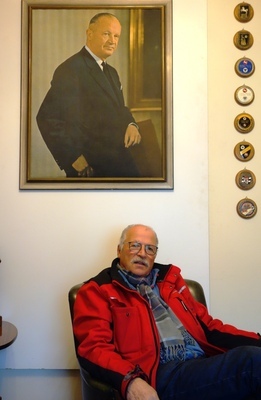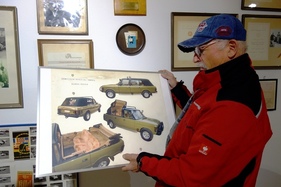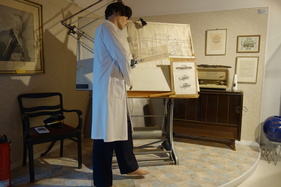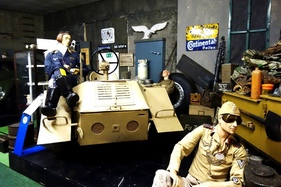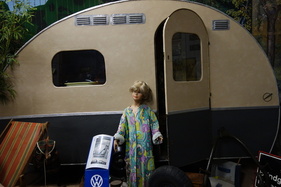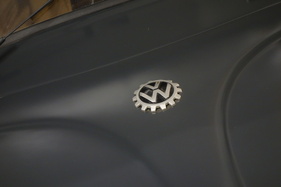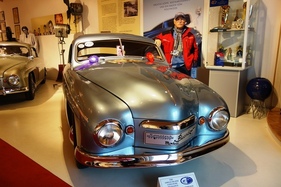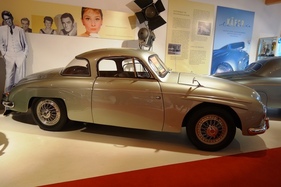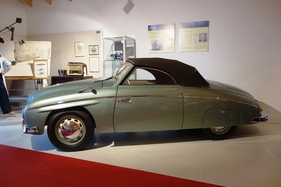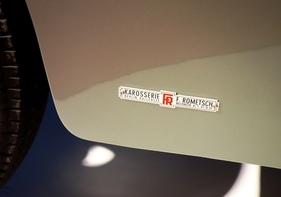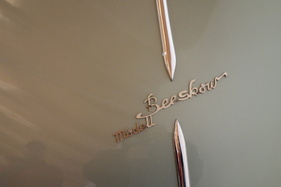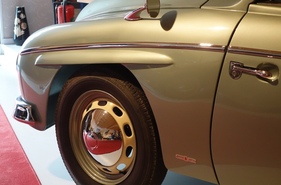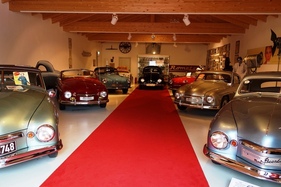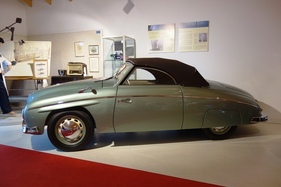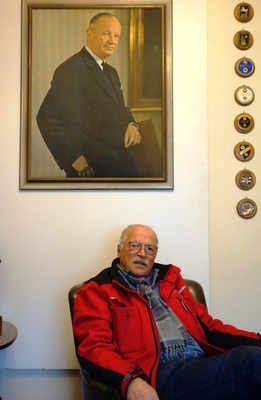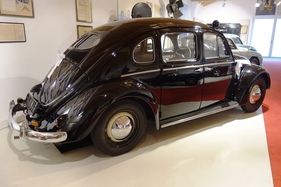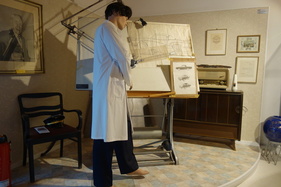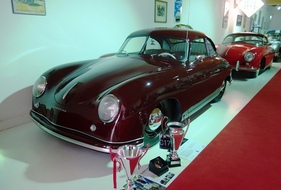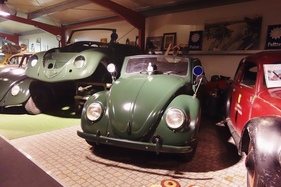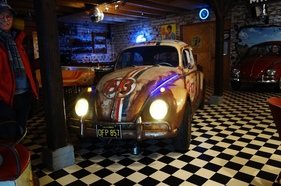How does one begin a text about the excellent Grundmann Collection? Perhaps by first stating that it is not a museum, as there are no fixed opening hours or admission prices. And it is not really a pure Volkswagen collection, if only because it is supplemented by a unique collection of cars from the former Berlin company Rometsch. In other words, it is more like a collection consisting of two parts, whose common denominator is early Volkswagens ...
Over 80 contemporary witnesses invite you to linger
It is amazing what finds Traugott Grundmann and his son Christian have collected and restored themselves over the last few decades. Carefully decorated in a contemporary style, the more than 80 cars have found a new home in several halls in a small town in the Weserbergland region. And those who - like the author - are lucky enough to be guided through the collection by Traugott Grundmann himself, can immerse themselves in German automotive history and the soul of the Volkswagen. And last but not least, it is the details of the extremely rare exhibits that fascinate. We can therefore agree with the founder of the collection when he casually remarks that you could easily spend a whole day here...
Between Beeskow and Lawrence
The tour starts with the Rometsch company, to which the "Grundmänner" have dedicated a separate hall. It houses the world's largest collection of these rare cars. Here are a few facts: Friedrich Rometsch, who had previously worked for the renowned company Erdmann & Rossi, founded his own coachbuilding company in 1924, which was active until the turn of the millennium. During this time, in addition to body repairs, special bodies were manufactured for a wide variety of clients and, incidentally, electric window regulators were designed for the first time in Germany as early as 1942. Rometsch became famous in the 1950s as a manufacturer of sporty and elegant cars on Beetle chassis, namely with the Beeskow and Lawrence models. Like Rometsch, Johannes Beeskow, the designer of the model named after him in today's parlance, had been employed by Erdmann & Rossi.
Grundmann Sr. had good personal contact with Rometsch and Beeskow and can therefore give a first-hand account of how their collaboration came about, but that would be going too far here. In any case, the beautifully designed cars based on the Beetle were popular with celebrities in the 1950s, both as coupés and convertibles, including in the USA. Prominent owners of a Rometsch Beeskow included Viktor de Kowa, Audrey Hepburn, Gregory Peck and Aenne Burda. The cars of the latter two are part of the Grundmann collection. And in the ARD two-parter "Aenne Burda: Die Wirtschaftswunderfrau" (starring Katharina Wackernagel), vehicles from the Grundmann collection were featured. Initially, Rometsch obtained the Beetle chassis for his cars from the local Volkswagen dealer. However, as the Beeskow's success grew, the factory disliked this, not least because of the competition with its own product, the VW Karmann-Ghia, which is why Wolfsburg imposed a delivery boycott on Rometsch. The then VW boss Nordhoff is said to have stated that "Volkswagen is an automobile factory and not a chassis factory".
However, this was not a serious problem for Rometsch, as he now obtained new vehicles from third parties or his customers returned their new Beetles to him for further processing. So Rometsch had the chassis he needed, but the bodies were left over. Grundmann Sr. shows a newspaper advertisement placed by the Rometsch company with the text: "Some brand-new VW series export bodies Mod. 54, latest version, for sale at a reasonable price". In keeping with the spirit of the times, and probably also with a view to the US clientele, Rometsch presented an "Americanized" successor to the Beeskow from 1957, namely the Lawrence model with panoramic windscreen. However, car production came to an abrupt end in 1961. Not due to a lack of demand, but because of the construction of the Berlin Wall. The majority of the Rometsch coachbuilders came from East Berlin and were therefore suddenly no longer available. Another early Rometsch creation seems somewhat unusual: The four-door(!) version of the 1952 Beetle on an extended chassis, which was used as a cab in Berlin. It is the only surviving example in Europe.
Between 1951 and 1953, around 30 of these cabs were built by Rometsch, and later more were built by Messerschmitt in Frankfurt. A nice anecdote in passing: the roof of the Beetle cab on display is adorned with two lamps with "Taxi" written on their yellow lenses. "The Berliners called them hunger lights", Grundmann reports, because: "If the lights were on, the cab was stationary and the driver couldn't earn anything". In terms of automotive history, the history of the origin of a striking stylistic feature that goes back to Rometsch is remarkable, namely the lancet or "wheel whistle" above the front wheel cut-outs. These first appeared on the Beeskow and only later on the Mercedes SL models of the 1950s. "They came about solely due to the fact that the TÜV did not accept that the wheels protruded from the bodywork," explains Grundmann. He also reports that the Rometsch company produced conversions for the then Chairman of the State Council Erich Honecker, such as his hunting car, under the strictest discretion. The "Rometsch Hall" is attractively furnished with relevant original material. These include the desk of the company boss and the original drawing board with sketches by Lawrence. The Grundmann Collection also has the original Rometsch workshop equipment as well as the molds on which the body panels were once denged.
Concours winners, one-offs and prototypes
All of the Rometsch cars on display are either in excellent original condition or have been perfectly restored by the "master craftsmen". Visitors are therefore not really surprised that the 1951 Beeskow Coupé won first prize in its class at last year's Concours d'Elegance in Amelia Island, Florida. Another rare exhibit on display in a different section is also likely to be in this league: the 1957 Denzel 1300, which is located in the vicinity of a phalanx of Porsche four-cylinder models. With its 52 hp, the two-seater with a tight-fitting aluminum body was a real sports car in its day. It is perfectly proportioned and reminds the author somewhat of the Porsche 550 Spyder. Some readers will perhaps associate the name Denzel more with the BMW 700, as the Austrian, in collaboration with Michelotti, had initiated this small car, which bridged the time until the appearance of the "New Class" from BMW. The range of Porsches just mentioned begins with an immaculate 356 Pre A coupé with a split windshield from 1950, awarded at the Schloss Dyck Masterpieces 2019.
Lovers of early Porsches get their money's worth in this department, regardless of whether it's a Bentley 356, Speedster, Carrera 2 or 912. During the tour, Traugott Grundmann rather casually points out that these are often vehicles from first ownership with matching numbers or low mileage. This ambience also includes original designs from the former GDR, such as the Lorenz 1.1 liter sports car from 1951, which was found in Saxony a few years ago. The vehicle was built on the basis of a VW bucket from the Second World War. It demonstrates a high level of craftsmanship and a talent for improvisation and stands on Opel wheels that have been weight-optimized by drilling holes. The fact that this and other vehicles in the collection still exist at all is thanks to Grundmann Jr. who tracked down and was able to acquire several cars in the new federal states immediately after reunification.
But now to the essentials
Another spacious hall actually contains everything you need to know about the history of the VW Beetle. Anyone who wants to do basic automotive research will find what they are looking for here. Whether Beetle, Bulli T1, Kübel or Schwimmwagen - every exhibit has a story to tell. The best known is probably the prototype No. 6 of the 1938 Pretzel Beetle, hand-built by Porsche, which the "Grundmänner" found and acquired as a wreck in Lithuania ("near the former Königsberg"). Anyone who compares the current condition with the pictures of the car as it was found can appreciate how much work and care must have gone into rebuilding it. This was rewarded by winning the Golden Classic Steering Wheel 2012 from a well-known classic car magazine for the "Restoration of the Year". The cornerstone of the collection has also found a place of honor here: It is a 1957 Beetle convertible, which Traugott Grundmann discovered and restored during his time as a pilot instructor in the USA. And then - after a tour of 6000 km across the USA - brought it back with him. In this section, a prototype of the Kübelwagen stands next to a Beetle that was once registered to the Nazi ideologue Alfred Rosenberg, and opposite is a Volkswagen derivative that was used as a towing vehicle for fighter planes. There is also an astonishingly modern-looking caravan in front of which the KdF car was to be hitched.
There are also various Volkswagens on display that were assembled for the British military after the end of the war - including one especially for female military personnel. And there are always interesting details to be discovered. For example, it is noticeable that a Beetle from the very early post-war production was fitted with the headlights of the Kübelwagen due to a lack of materials. There are also several variants of an open Beetle police car from the post-war period. And there is also plenty to discover for fans of the T1: for example, the oldest VW estate in the world from 1950, a Sambabus from 1954 or the oldest Bulli converted into a radio station. Of course, there are also a number of Karmann-Ghias. In addition to several Type 14s, there is also a prototype of the Type 34 convertible, incidentally the last project in which Johannes Beeskow, who ended his career as technical director at Karmann, was involved. Sales brochures had already been printed for this car. "But it never went into series production because GM threatened to take legal action due to its similarity to the Chevrolet Corvair Cabrio," comments the collector Grundmann.
The exhibition also includes very sporty Volkswagens, such as a Formula Vee representative and a Beetle that was used exclusively as a racing car from 1973 to 2014. Of course, no Hebmüller convertible should be missing from such a collection. On display is the oldest surviving example built in 1949 in black and red, number 5 of the 696 convertibles once built. In front of it is another delicacy, a 1956 cabriolet from the Stuttgart company Dannenhauer & Stauss. The beautifully shaped car, which looks a little like the Porsche 356 from the front, is one of just under 100 vehicles produced, naturally based on the Beetle. After a brief look at a 1303 Beetle that once belonged to Götz George ("Horst Schimanski"), we suddenly find ourselves in a small American diner at the end of the tour and are bid farewell by Herbie, the "great Beetle" with the number 53 and the Californian license plate OFP 857, known from various Disney productions. Of course, this is also one of the 26 original vehicles used for filming.
Time to say goodbye and thank Traugott Grundmann for the informative tour of the unique collection. You really would like to spend a whole day here...
